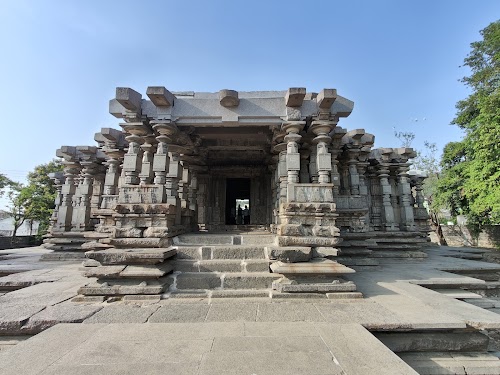
Thousand Pillar Temple
Warangal, India
- Admire the intricate Kakatiya architecture.
- Enjoy the peaceful and spiritual atmosphere.
- Explore the temple's detailed carvings.
- Learn about the Kakatiya dynasty history.
- Offer prayers to Lord Shiva, Vishnu, and Surya.
- Photograph the monolithic Nandi statue.
Known for:
Description:
The Thousand Pillar Temple, a stunning historical monument in Warangal, is a testament to the architectural prowess of the Kakatiya dynasty. Built in the 12th century, the temple is renowned for its intricate carvings, exquisite sculptures, and the remarkable engineering that allows for a thousand pillars to support its structure. Dedicated to Lord Shiva, Vishnu, and Surya, the temple complex offers a serene and spiritual experience. Visitors can marvel at the monolithic Nandi bull, the perforated screens, and the detailed artwork that adorns the walls and pillars. The temple stands as a symbol of the rich cultural heritage of the region and provides a glimpse into the artistic achievements of a bygone era. A visit to this temple is a journey back in time, offering a captivating blend of history, art, and spirituality.
History:
The Thousand Pillar Temple was commissioned by the Kakatiya king, Rudra Deva, in 1163 AD. It served as a significant religious and cultural center during the Kakatiya reign. The temple's design reflects the Kakatiya style of architecture, which is characterized by its intricate carvings and the use of local materials. Over the centuries, the temple faced periods of neglect and damage, particularly during the Tughlaq dynasty's invasion in the 14th century. However, restoration efforts have been undertaken to preserve and revive the temple's original grandeur. Today, the Thousand Pillar Temple stands as a protected monument, attracting tourists and devotees from all over the world who come to admire its architectural beauty and historical significance.